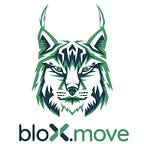bloXmove — the technologies powering the BLXM token
This is the second tranche of our series on the BLXM token for Power & Mobility. In our last article
we gave a general background on the bloXmove Mobility Blockchain Platform and proceeded to describe the “Power meets Mobility” use case.
In this edition we go to the other side of the spectrum and give an overview over the set of technologies and protocols the bloXmove Mobility Blockchain Platform is based on.
Decentralisation and convergence: Blockchain, DID and IoT
bloXmove applies decentralised technologies to industrial and commercial applications. The platform positions itself as B2B2C, i.e. we act as a B2B platform for our business customers who provide B2C or B2B services.
The big problem we solve can be stated in simple terms:
“bloXmove provides Transaction-as-a-Protocol: it executes and settles business transactions from the initial verification of consent to the final financial settlement.
From customer signature by way of hardware-based verification of service delivery to fully automated revenue distribution and financial settlement”
Transaction as a Protocol: Overview and definitions
bloXmove will be THE decentralised shared network on which businesses and customers in urban and electric mobility will conduct business. bloXmove will also interconnect electric vehicles with the power grid to enable grid balancing based on aggregated fleet batteries.
Any and all of these services can be broken down into 2 + 5 steps as follows:
- Discovery
- Matchmaking
The above two steps are part of customer and product journey and out of scope to bloXmove. This is where services are offered, browsed through, considered and ultimately chosen.
Once a choice has been made, the next 5 steps are as follows:
- Identification and verification of customer(s) and companies taking part in the transactions (Know-Your-Customer/KYC, Know-Your-Business/KYB)
- Consent Agreement, i.e. contract signing by at least two parties in the contractual agreement.
- Actual consumption and delivery of service accompanied by
→ collection of billing data, “call detail records”, a.k.a. CDR - End of service, invoicing and booking of liabilities
- Financial settlement, i.e. payment, offsetting or netting-off.
bloXmove handles these 5 execution steps for all organisations connected to the platform. It does this as part of the Web3.0 network layer, i.e. the complete transaction execution becomes independent of and external to actual customer-facing business logic and product design.
This is what we mean by “transaction-as-a-protocol” (TaaP).
TaaP enabled by Decentralized Identities (DID), Blockchain and the Internet-of-Things (IoT)
Decentralised Identifiers (DID) are being defined by the World Wide Web Consortium (W3C) a
“a new type of globally unique identifier. They are designed to enable individuals and organisations to generate their own identifiers using systems they trust. These new identifiers enable entities to prove control over them by authenticating using cryptographic proofs such as digital signatures.”(1)
DIDs provide a self-sovereign, peer-to-peer and highly secure way to manage identities for individuals, companies as well as connected devices (IoT). Based on the underlying protocols, identities can be confirmed and credentials can be given, verified and revoked.
The Identity Triangle: Company, Customer and cars as autonomous economic agents
bloXmove’s system architecture is based on what we call the “Identity Triangle”:
This triangle forms the central programming paradigm of bloXmove. Any and all transaction we process and commit to the layer-1 blockchain, always consists of verified credentials and digital signatures referring to fully authenticated identities.
Any and all party conducting business on bloXmove has to undergo Know-Your-Customer (KYC), Know-Your-Business (KYB) or Know-Your-Device (KYD).
This is (unfortunately?) a clear requirement for any platform wishing to conduct business with corporations and regulated companies.
This paradigm also ensures that all transactions on bloXmove indeed constitute legal and enforceable contracts and that all billing data used to calculate amounts due for invoicing is digitally signed by known and on-boarded parties or devices.
DID for Know Your Customer (KYC)
A typical example would be a rental transaction:
1) Company Acme offers a car for rental at 1 € per 10 km and 1 € per hour. It signs the offer with a signature deriving from its digital and verified identity.
2) The offer is conditional on the customer being more than 18 years old and possessing a valid driving license.
3) Customer Bob views the terms and conditions and signs his acceptance digitally. At the same time Bob submits his “verified credentials” (VC) which prove he is above 18 years and has a driving license which has been verified by an authorised trust provider who signed and verified these credentials.
→ based on this “consent agreement” there is now a valid, legally enforceable contract in place between the two parties.
All transactions within the bloXmove platform follow this paradigm. This ensure full physical and factual validity of business facts and statements we commit to the Blockchain.
By combining stringent verification of identities, billing data and agreements and securing them with digital signatures, we ensure that records being committed to the immutable shared, distributed ledger (DLT) of bloXmove have been validated as factual before we commit them ; thus avoiding the false precision “garbage in — garbage out” can offer.
Man-to-Machine interactions based on DID and Blockchain
bloXmove is built for the future — where autonomous or at least guided autonomous vehicles will be the norm. This is a future in which mobility will be a part of smart cities infrastructure and traffic will be managed over 5G or 6G networks in which devices, traffic control systems, vehicles and urban infrastructure form one networked urban organism.
In this kind of environment it becomes crucial to include machines and smart devices (the Internet of Things) into the delivery, orchestration and billing of transactions.
bloXmove is working with several companies to create the necessary mechanisms by which smart devices can be equipped with DIDs and connect to bloXmove over thin Web3 Blockchain clients.
Outlook
In the next edition of this series we will complete the description of the Identity Triangle by showing how companies are using DIDs and verified credentials.
(1) https://www.w3.org/TR/did-core/
